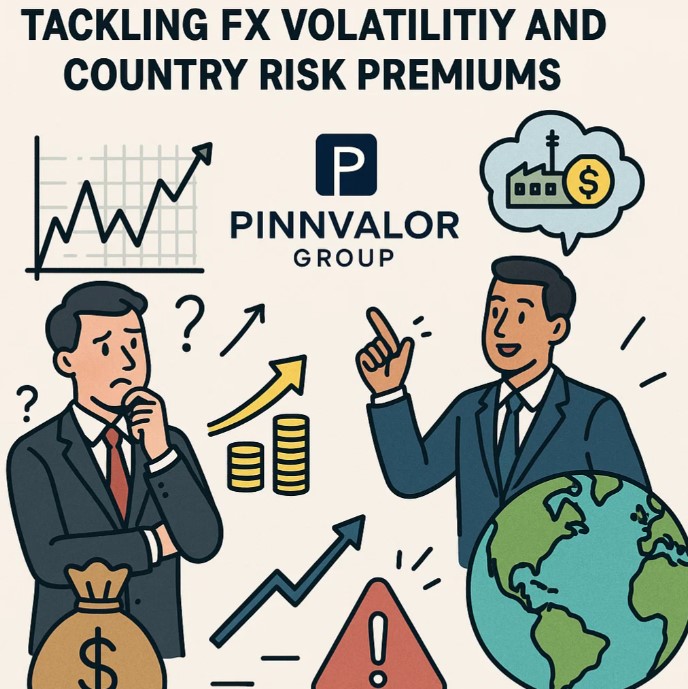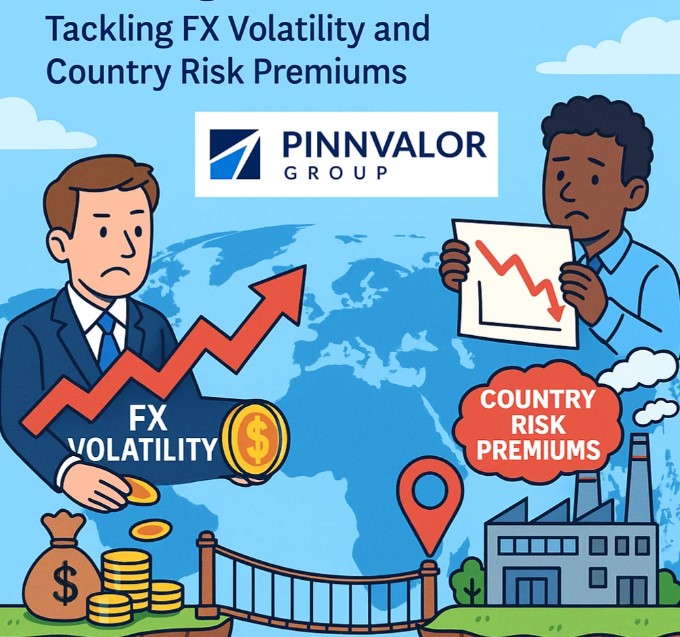
Valuing Across Borders: Tackling FX Volatility and Country Risk Premiums
In today’s global economy, companies, investors, and analysts are increasingly faced with the challenge of valuing assets and businesses that span multiple countries. While the fundamentals of valuation—such as forecasting cash flows and discounting them at an appropriate rate—remain constant, cross-border valuations bring in added layers of complexity. Chief among these are foreign exchange (FX) risk and the country risk premium (CRP).
This blog explores these critical dimensions and outlines best practices to navigate valuation across borders.
How do you adjust for risk when your investment crosses borders?
Valuing across borders isn't just about numbers—it's about navigating the unpredictable terrain of currency shifts and political risks.
🌍 Understanding the Global Valuation Landscape
Global investments are no longer confined by borders. Whether it’s a multinational acquiring a subsidiary abroad, or a private equity firm evaluating opportunities in emerging markets, cross-border transactions require a nuanced approach to valuation.
Two primary risks emerge in this context:
- Foreign Exchange (FX) Risk
- Country Risk Premium (CRP)
💱 FX Risk: Currency Fluctuations and Their Impact
What is FX Risk?
FX risk arises when a company’s future cash flows are denominated in a foreign currency. Exchange rates are inherently volatile and can materially impact the value of an asset when converted back to the investor’s home currency.
How It Affects Valuation:
- Cash Flows: A devaluation in the host country’s currency can reduce the real value of expected cash flows.
- Cost of Capital: The discount rate must reflect currency-specific risks.
- Conversion Approach: Analysts must decide whether to forecast in local or base currency and apply consistent FX conversion rates or forward curves.
Approaches to Address FX Risk:
- Dual-Currency Valuation: Forecast in local currency and convert using expected exchange rates.
- Hedging Strategy: Factor in the cost and impact of financial hedging mechanisms like forwards, options, or swaps.
- Scenario Analysis: Use best/worst-case FX scenarios to test sensitivity of valuation outcomes.
🏦 Country Risk Premium: Quantifying Macro & Political Uncertainty
What is Country Risk Premium?
The CRP is the additional return investors demand to compensate for the higher risk of doing business in a particular country compared to a developed, stable market like the U.S.
Sources of Country Risk:
- Political instability or policy unpredictability
- Economic volatility (inflation, unemployment, etc.)
- Legal and regulatory environments
- Creditworthiness (sovereign credit ratings)
- Corruption and enforcement of contracts

How to Incorporate CRP in Valuation:
- Adjusting the Discount Rate: Add the CRP to the base cost of equity derived from models like CAPM.
- Differentiation by Industry: Some sectors may carry more or less exposure to country risk.
- Damodaran Methodology: Use sovereign bond spreads, default spreads adjusted for equity risk, or synthetic country ratings.
🧮 Practical Example: A Cross-Border Valuation Scenario
Imagine a U.S. company evaluating an acquisition in Brazil. The target firm generates cash flows in Brazilian Real (BRL), while the parent company's reporting currency is USD.
Key Steps:
- Forecast free cash flows in BRL.
- Use projected FX rates to convert to USD, or calculate USD-denominated discount rate factoring in inflation and FX expectations.
- Determine Brazil’s CRP (e.g., using Damodaran’s data or sovereign bond spreads).
- Add Brazil’s CRP to the base discount rate (e.g., U.S. cost of equity).
- Run sensitivity analysis around BRL/USD fluctuations and Brazil-specific political risks.
🔧 Best Practices for Cross-Border Valuation
- Use Country-Specific Inputs Thoughtfully: Customize assumptions to local realities—don’t blindly apply home-country metrics.
- Conduct Sensitivity & Scenario Analysis: Test FX volatility and country risk impact on valuation outputs.
- Stay Updated on Geopolitical & Economic Developments: These can significantly affect risk premiums and exchange rates.
- Consider Legal and Tax Implications: Local tax laws, repatriation issues, and investment treaties impact cash flow projections.
🔍 Conclusion
Valuing assets across borders requires more than just financial acumen—it demands a deep understanding of macroeconomics, politics, and currency markets. FX volatility and country risk premiums are not peripheral—they are core to any cross-border valuation.
By acknowledging and systematically adjusting for these risks, professionals can produce valuations that are more robust, realistic, and reflective of global complexities.
📌 Key Takeaways:
- FX risk can erode or enhance cash flows depending on currency movements—always model multiple scenarios.
- Country risk premiums should reflect the unique economic and political risks of the region.
- Integrating both into valuation enhances credibility, accuracy, and strategic insight.
